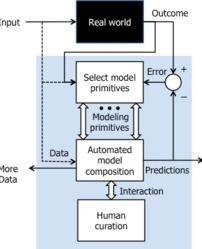The Defense Advanced Research Projects Agency has launched its Data-Driven Discovery of Models program that aims to automate aspects of data science to help non-experts construct their own empirical models.
DARPA said Friday D3M looks to address a data science expertise gap the agency says is reflected by lack of results for predictive questions among popular search engines.
“The construction of empirical models today is largely a manual process, requiring data experts to translate stochastic elements, such as weather and traffic, into models that engineers and scientists can then ask questions of,” said Wade Shen, a DARPA program manager in the information innovation office.









